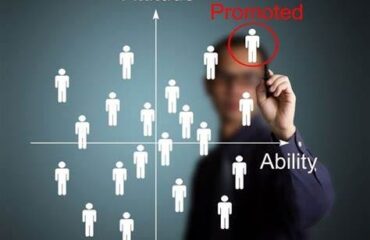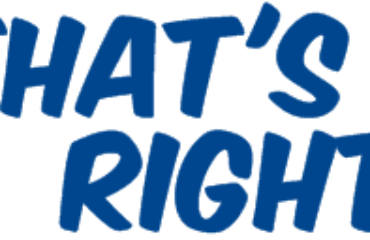
During the last two articles of this series of converting New Year resolutions into Habits I had discussed System 1 and System 2 parts of the brain and what functions each of these influence.
Particularly, how little improvements daily leads to compounded benefits in the long run and some of the problems and bottlenecks that we encounter in converting our planned New Year resolutions into habits…
So, when we decide to start something as a new year resolution its because we have a craving for something. When we start working out daily it’s because we have a craving to become more fit or have a better figure or look better depending on what each person aspires for themselves. Therefore the primary reason which sets us in motion is craving. So the basic building block when you are trying to build a new habit is Craving.
Now to achieve this craving you start off a series of activities which you feel will lead you to the results. So to become fit you might start walking for an hour or doing yoga or going to the gym or playing badminton or tennis etc.. So these activities that you do are the responses or routines that you are building up daily to satisfy your craving of becoming fit or healthy or looking good. Therefore, the second building block when we are trying to build a new habit is the Routine that we decide to follow.
Now let’s understand what happens when we do something that is already a habit.
Let’s consider the simple example of what happens when we get into a dark room. Here when we enter the room the room is dark and since the room is dark as a habit we crave for light and as an action of getting light we search for the switches if we are in a room which we are not familiar. We locate the switches and switch them of. So when we enter the room the darkness in the room is what is called as Cue in the habit cycle and wanting to have light in the room is the Craving, the searching for the switches and switching them on is the routine that is followed and once we do get the light in the room the same is treated as the reward by the brain.
Let’s take a second example which most of us are familiar with. We wake up and are still sleepy and not alert enough. So you decide to have a coffee. You feel alert after having the coffee. So here drinking coffee becomes associated with waking up…If we break this down to the different phases
- Your waking up and not being alert is the Cue
- Your wanting to feel alert is the Craving that you have
- You drinking coffee is the response or action that you have performed
- And becoming alert is your reward
So when you keep doing this again and again the system 1 of your brain builds it into a habit and the entire process starts happening seamlessly even without you thinking about it.
My younger daughter tells me that she has really woken up once she finishes brushing her teeth and so it has become a routine for her like most of us…
The cue here is you have woken up but still not fully awake
The craving is wanting to become awake
The response or action is the brushing of your teeth
And the result is that you have woken up fully
So while trying to create a new habit having the right Cue is perhaps the most crucial …
Like I had written in the last article brushing our teeth is something that has become a habit for all of us around the world in less than a hundred years. So how this habit really started off is very interesting to understand ..
One day in early 1900 a prominent American executive named Claude C Hopkins was approached by a friend about how to sell a minty frothy toothpaste which he had named as Pepsodent and the friend wanted Hopkins to design a campaign to promote pepsodent. When Hopkins was approached the dental health of Americans was on a decline. As the purchasing power of the common man increased, they started buying large amounts of sugary processed food. When recruits were being recruited for the first world war poor dental health was tagged by the army as a national security risk…
During his research Hopkins found reference to mucin plaques on the teeth which he called as the film. The film is a naturally occurring membrane that builds up on teeth regardless of what you eat and how often you brush. You could get rid of the film by eating an apple, running your finger over your teeth, brushing or vigorously swirling liquid around your mouth. Tooth paste really didn’t do anything to remove the film. Hopkins made this film the Cue on which he could build the habit..So Pepsodent released advertisements focussed on the film some of which ran like
“Just run your tongue across your teeth. You will find a film that makes your teeth off- colour and invites decay””
Another one ran like this …
“Millions are using a new method for tooth cleansing. Why would any woman want a dingy film on her teeth? Pepsodent removes the film””
The greatness of these appeals was that they relied upon a Cue –Tooth film-that was universal and impossible to ignore. When anyone after seeing the advertisement ran their tongue across their teeth they were most likely to feel the film that was being highlighted in the Pepsodent advertisement…
The second reason for the success of these advertisements which went on to create the widest habit across the globe was the clear definition of reward. Here beauty was the craving ..So this advertisement had a clear cue and a craving which started out the habit of brushing of teeth and within three weeks of release of the advertisement, the demand of Pepsodent exploded and it went on to become a worldwide habit. When the campaign was launched 7% of Americans used toothpaste, within a decade it had climbed to 65%…
As we have seen in the above example having a proper cue and craving are essential to ensure that whatever New year resolution you have made gets built into a habit. While we will already be having the craving based on which we are making the New year resolution it is crucial to identify the right Cue to ensure that we are able to follow the sequence daily till it grows into a habit.
To know how to build the right Cues watch this space for more…



